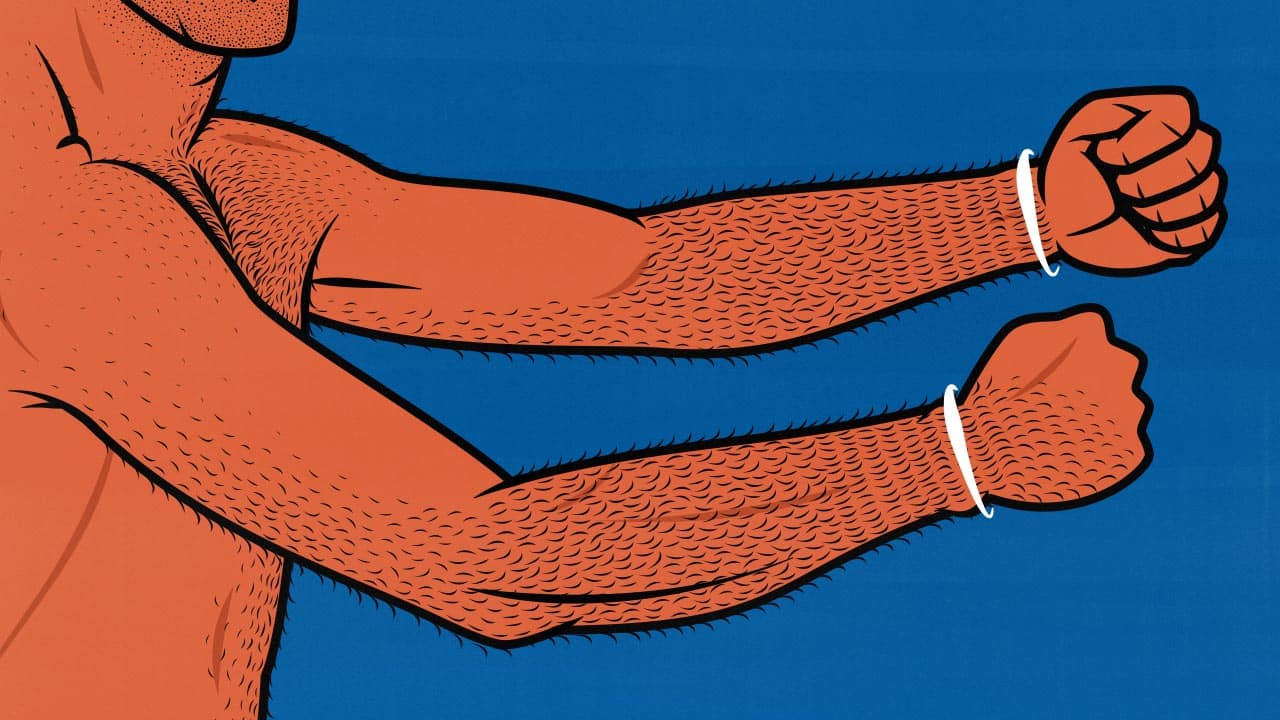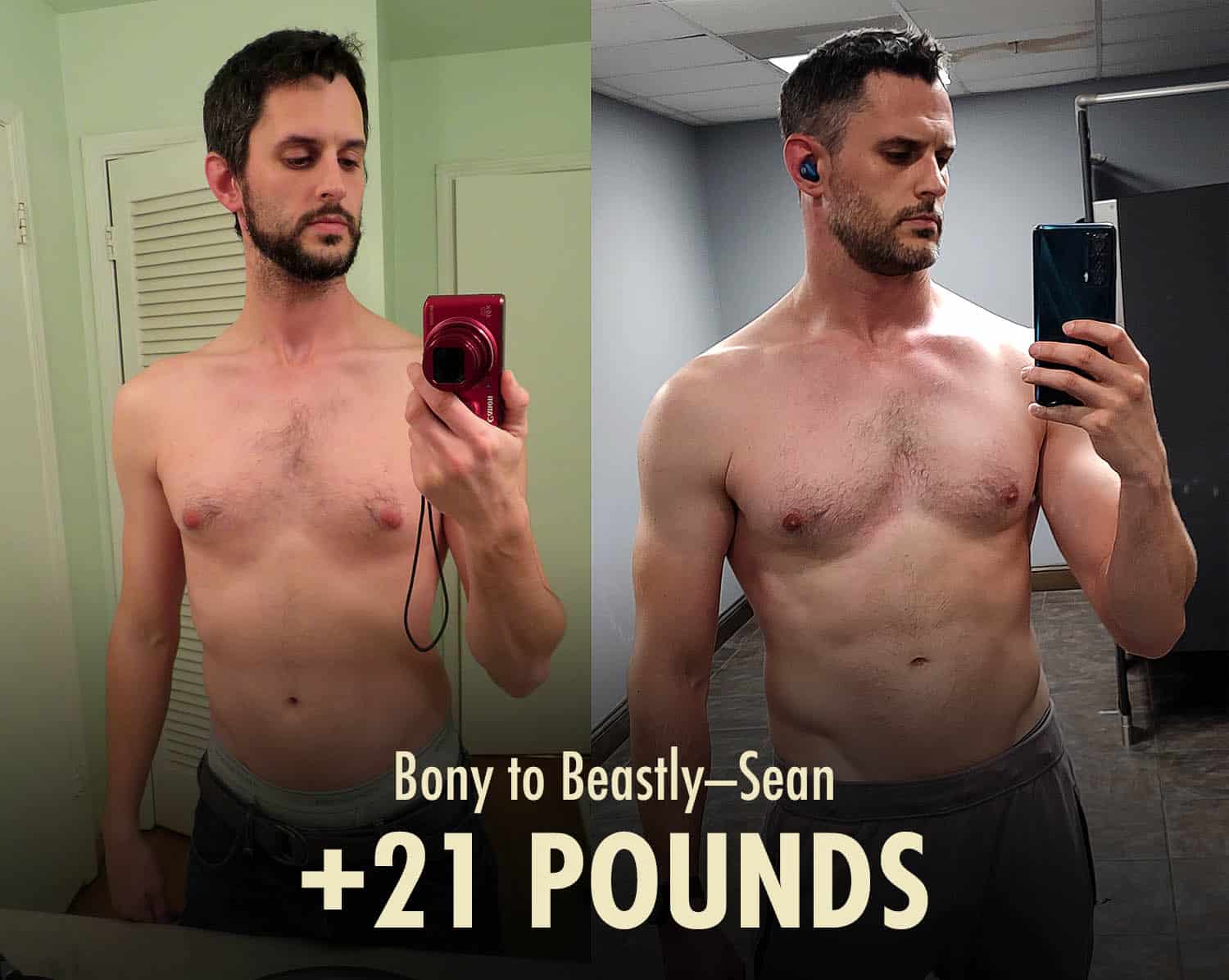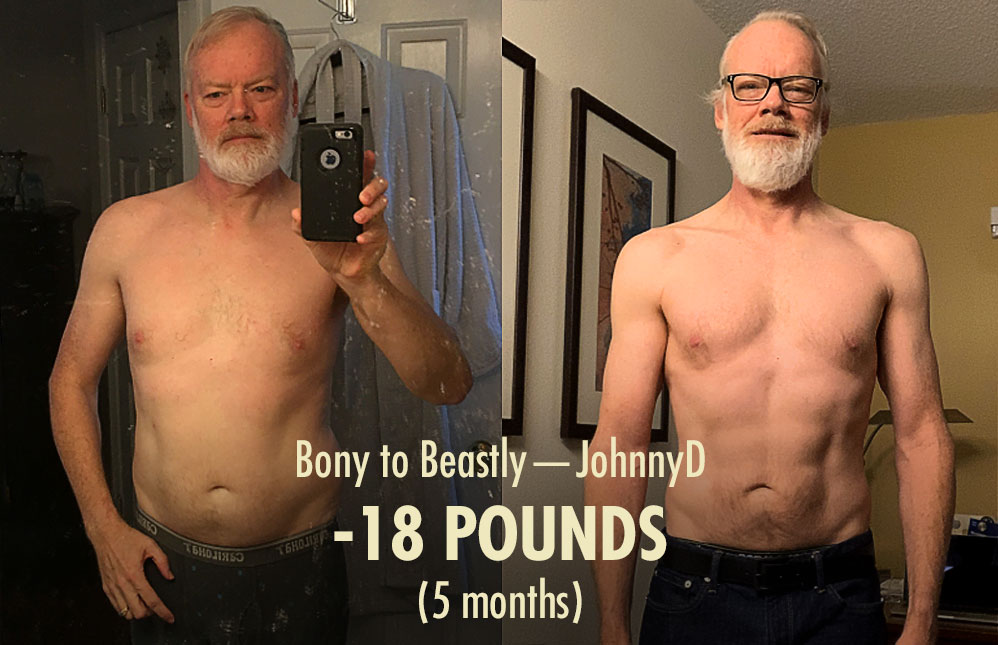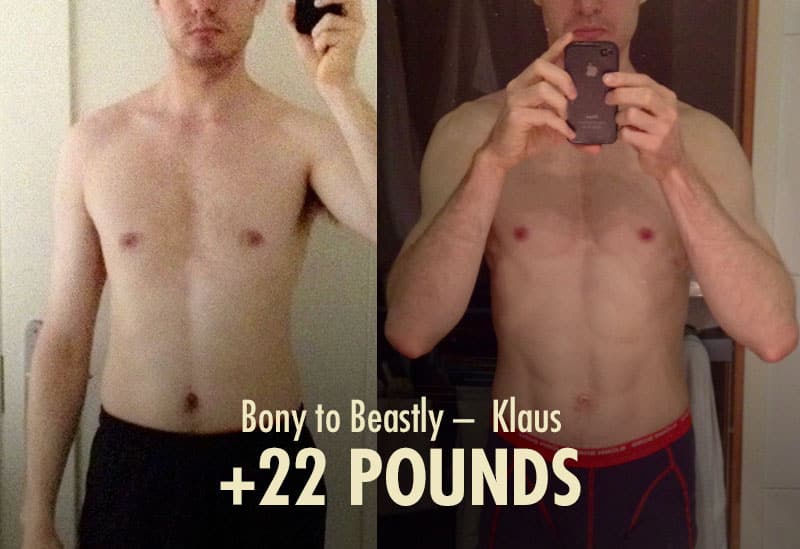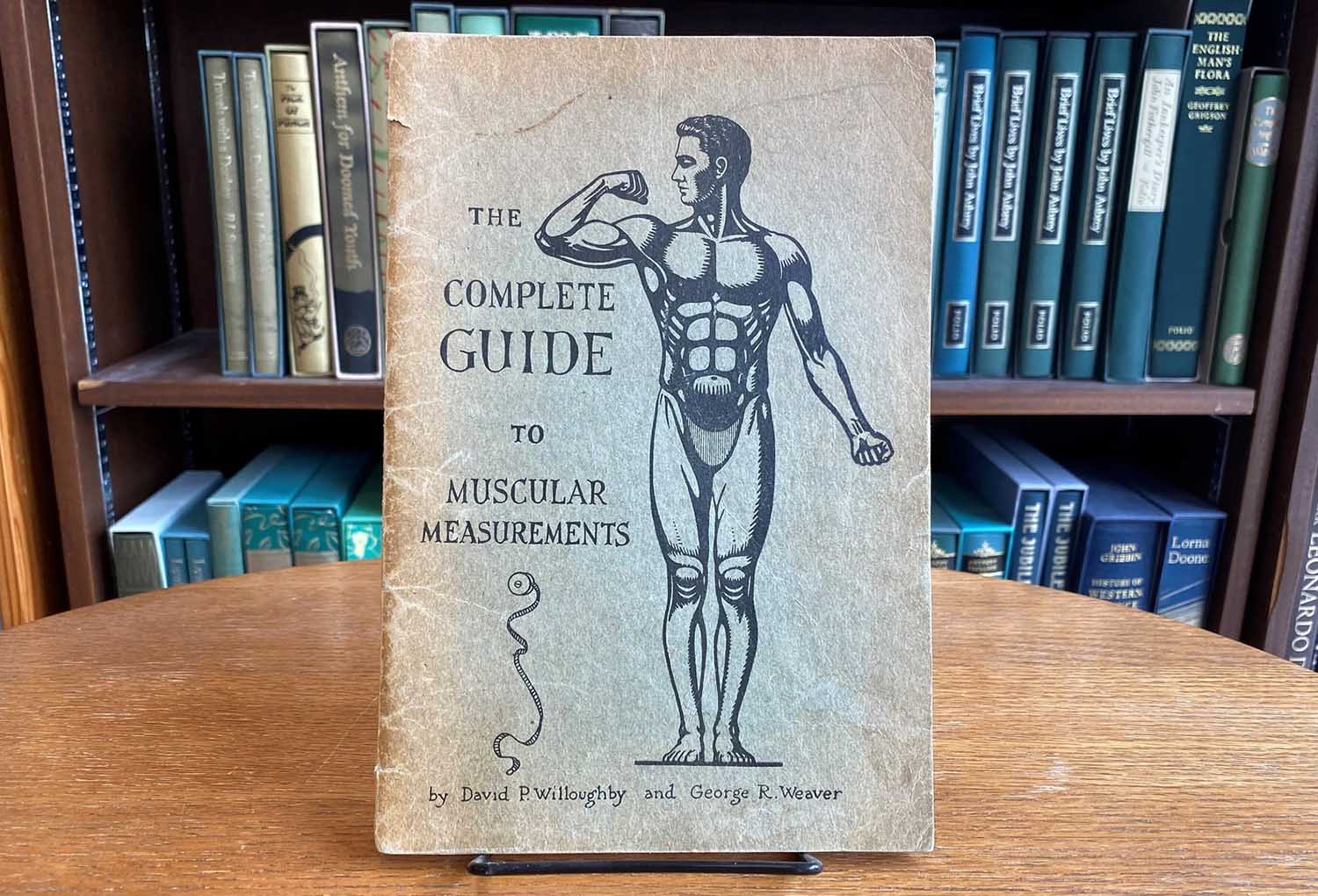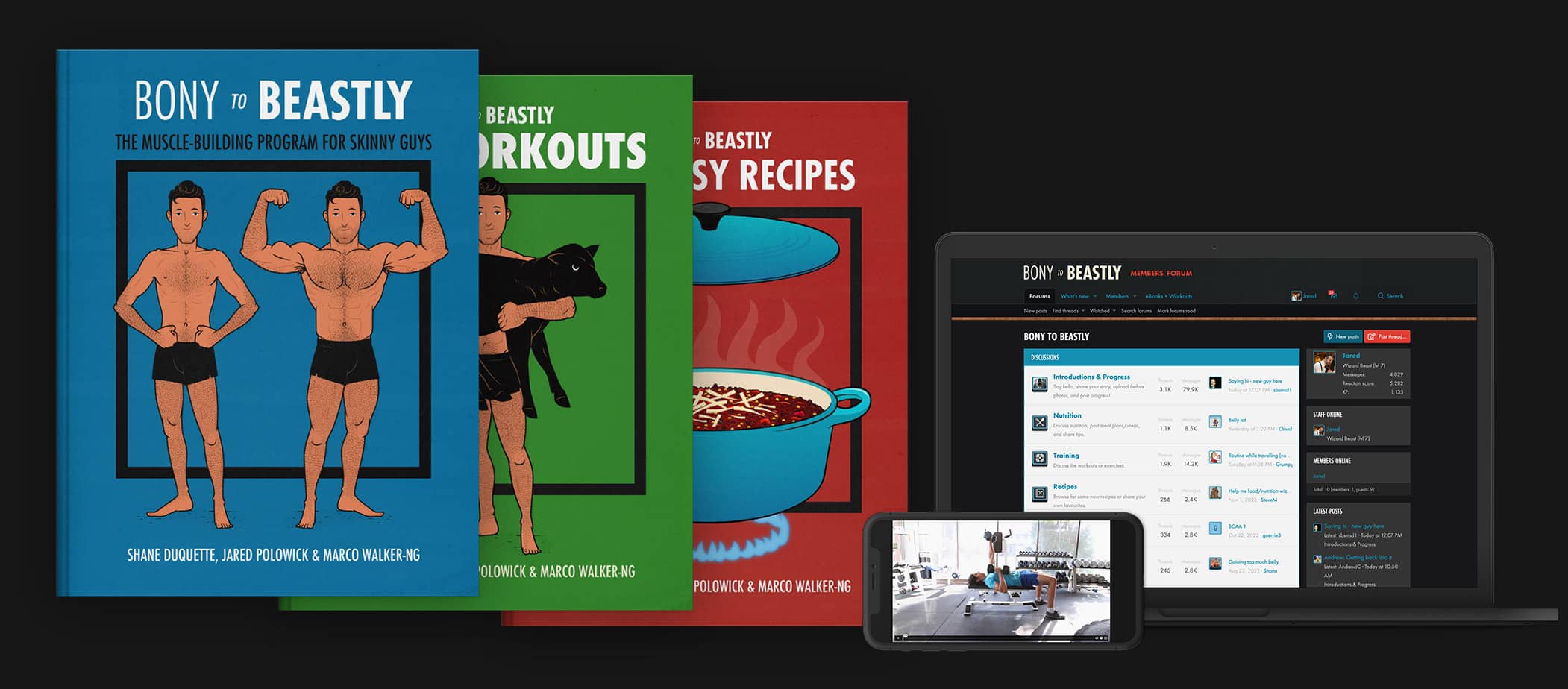Ideal Weight & Measurements Calculator
For Bodybuilding & Wooing Partners
How to Use the Calculator
The calculator runs on a few different measurements. Your height determines your ideal shoulder and waist circumference, whereas the thickness of your wrists determines your ideal body part measurements.
To get your wrist circumference, measure your wrist between your hand and the bony protrusion (carpal boss). The average male wrist circumference is about 7 inches (18 cm). Mine is 6.75 inches.
Your wrist circumference is a good proxy for the overall thickness of your bone structure. Those with thinner builds tend to have a harder time building muscle but also look better with smaller measurements. Those with thicker bones have an easier time building muscle and can benefit from building more of it.
Your goal body fat percentage should be somewhere between 8–15%. Anywhere within that range is perfectly attractive. Some bodybuilders prefer the leaner side. We'll adjust your ideal weight and measurements to align with your goal body fat percentage.
If you're naturally lean, err on the lower side (maybe 10%). If you have trouble getting and staying lean, err on the higher side (maybe 15%).
How to Measure Your Muscles
The best way to measure your muscles is to take body-part circumference measurements:
- Neck: Below the Adam's apple at the smallest point. Head held high and relaxed. The average man has a neck circumference of 15 inches.
- Shoulders: Measure all the way around your shoulders at the widest point. I'm not sure of the average man's shoulder circumference, but the average soldier has a shoulder circumference of 46 inches (study).
- Chest: The fullest part of the chest, usually at nipple level. Keep your chest relaxed and arms at your sides. Don't flex your lats or take a deep breath. 39 inches is average.
- Biceps: Flexed and measured at the highest peak. Measured "cold"—without a muscle pump. 13 inches is average.
- Forearms: The largest point of your forearm with your fist clenched and your wrist straight. 12 inches is average.
- Waist: At the height of your belly button, standing tall, relaxed. Don't take a deep breath or suck in. 40 inches is average.
- Thighs: Halfway between the hip and knee. Leg muscles relaxed. 22 inches is average.
- Calves: Flexed and measured at the largest point, with your heels on the floor. 14 inches is average.
The calculator will give you a rough idea of what measurements to aim for. Below, I'll explain why those measurements are so desperately sought after.
The Most Attractive BMI
Most women prefer men with a BMI of 23–26.5 (study). Your BMI is based on your height, so the taller you are, the heavier your ideal weight is. But your ideal weight is a range, giving you about 20 pounds of leeway.
If you have thin bones, a slight build, or a low body fat percentage, then the lower side of the range is great. If you have thick bones, a sturdier build, and a more moderate body fat percentage, then the upper end of the range might be better.
The average American man is 5'9, meaning he'd look most attractive between 156 and 179 pounds. If that sounds small, we have a full article about attractiveness and another article going over our survey results.
Body Fat Percentage
Most women find men most attractive at a body fat percentage of 8–15% (reference). Most men can be healthy with about 10–22% body fat (study), but most people find that the lower end of that range looks better. Men, in particular, tend to like the look of chiselled muscles. Women are slightly more forgiving.
- 10% body fat: chiselled abs.
- 12% body fat: faintly visible abs.
- 15% body fat: flat stomach, maybe some upper abs.
- 20% body fat: flat stomach, maybe some love handles.
Modern natural bodybuilders will often cut as low as 5% body fat before stepping on the stage. The muscle definition is impressive, but it isn't sustainable. Their faces hollow out, their necks look gaunt, and their hormone production plummets. So, they plump themselves back up to 8–15% body fat as soon as they step offstage.
If you're naturally lean, you might be able to sustain 8–12% body fat year-round. If you have a hard time getting and staying lean, 15% is probably more realistic. Anywhere between 8–15% can look optimally attractive, depending on the person.
If you want help getting leaner, we have an article about how to cut and a cutting calorie calculator.
Muscle-Building Mini-Course via Email
Sign up for our 5-part muscle-building mini-course that covers everything you need to know about:
- Hardgainer genetics and how to make the most of them.
- How to take a minimalist approach to building muscle while still getting great results.
- What you need to know about aesthetics, health and strength while muscling up.
Shoulder-to-Waist Ratio
Most research shows that a shoulder-to-waist circumference of at least 1.6-to-1 is ideal (study). That's because when you build muscle, more of it accumulates around your shoulders than your waist, especially if your workout program includes plenty of chin-ups, rows, push-ups, and presses. Here's a detailed article about how to build broader shoulders.
A high body fat percentage all but guarantees an overly thick waist (at least for men). For your health, it helps to get your waist under 36–40 inches (study). For your appearance, you might want to get it a few inches smaller still. The best way to do that is to get leaner. If you can cut down to 8–15% body fat, your waist will look good, whatever your measurement is.
Note that building muscle will bulk up the muscles in your waist. Your abs, obliques, and lower back will all grow bigger. That's a good thing. The idea isn't to get your waist as tiny as possible. Rather, the goal is to get your waist strong and lean.
Once we have your shoulder and waist circumference, we can calculate your ideal chest and hip circumference. The idea is to have a muscular chest (and back) and to have hips that are somewhat larger than your waist.
At the average male height of 5'9 with 7-inch wrists and 12% body fat, the ideal shoulder, chest, waist, and hip measurements are:
- Ideal shoulders: 51 inches
- Ideal chest: 45 inches
- Ideal waist: 32 inches
- Ideal hips: 39 inches
Your bone structure affects your shoulder-to-waist ratio, making these measurements more realistic for men people than others. Keep the bigger picture in mind. Your shoulder-to-waist circumference is just a proxy for leanness and muscularity, so focus on getting lean and muscular, not on reaching these exact ratios.
The best way to build muscle in your shoulders, chest, and hips is to get stronger at the big compound exercises: the squat, bench press, deadlift, chin-up, and overhead press. You don't need to do those exact exercises. You can use dumbbells, machines, and cables instead of a barbell. You can do push-ups instead of bench presses. But you should focus on those movement patterns.
Ideal Muscle Measurements
I got these ideal muscle measurement formulas from Dr. Casey Butt. He got them by looking at Ancient Greek statues, measuring modern fitness models, and reading classic bodybuilding books like David P. Willoughby's The Complete Guide to Muscular Measurements.
Note that these measurements are based on the thickness of your bones, not on your height. Whether you're 5'4 or 6'4, it's your wrist circumference that determines your ideal body-part measurements. That means tall guys with thinner bones don't need to get as stocky as shorter guys with thicker bones.
If you have an average wrist circumference of 7 inches (18 cm), and if you're aiming for 12% body fat, then your ideal measurements are:
- Ideal neck: 16 inches
- Ideal biceps: 16 inches
- Ideal forearms: 13 inches
- Ideal thighs: 24 inches
- Ideal calves: 16 inches
We have an article about how to bulk up. We also have articles about how to build a bigger neck, bigger arms, thicker forearms, and more muscular legs.
Is This naturally achievable?
If you want to see what your natural muscular potential is, I made a calculator for that here. It will probably tell you that you can accomplish all of your aesthetic goals, building an ideally attractive physique. You might not get every single measurement. Maybe your shoulder-to-waist ratio won't be quite right. But you'll also be able to exceed some of these goals.
Most guys can get within spitting distance of these measurements within 2–5 years of productive training and dieting. If you have a very slight build (like me), you might need to fully develop your muscles, which can take as long as 5–10 years. If you have a sturdier build, the muscle will come easily, but you might have a harder time maintaining a low body fat percentage.
How to Get Bigger & Leaner
Most guys can improve their appearance by building muscle, burning fat, or doing some combination of the two. That gives you three paths you can take to become more attractive:
- Bulking is the fastest and most reliable way to build muscle. It's when you train for muscle growth, eat a nutritious muscle-building diet, and eat enough food to gain a little bit of weight on the scale each week.
- Cutting is the fasted and most reliable way to burn fat. It's when you train for muscle growth, eat a balanced diet, and dip into a calorie deficit, forcing your body to get energy from your body fat.
- Recomping is when you try to build muscle and burn fat at the same time, usually without focusing on gaining or losing weight. It works best for people who are overweight, out of shape, and not in the habit of lifting weights.
You'll notice that your upper-body muscles need to be more developed than your lower-body muscles. If you want to train for aesthetics, it's still important to train your lower body, but you might want to follow a program with a slight upper-body bias.
Once you're reasonably muscular and lean, you can focus even more on certain muscles and proportions. For example, if your arms are falling behind, you could do an arm specialization program to bring them up.
The Bony to Beastly Program
If you want a full fat loss and muscle-building program, including a 5-month workout routine, a diet guide, a recipe book, and online coaching, check out our Bony to Beastly Bulking Program. Or, if you want a customizable intermediate hypertrophy program, check out our Outlift Program. You can use either of these programs for bulking, cutting, or recomping.
Alright, that’s it for now. If you made it this deep into the article, you might like our newsletter.

